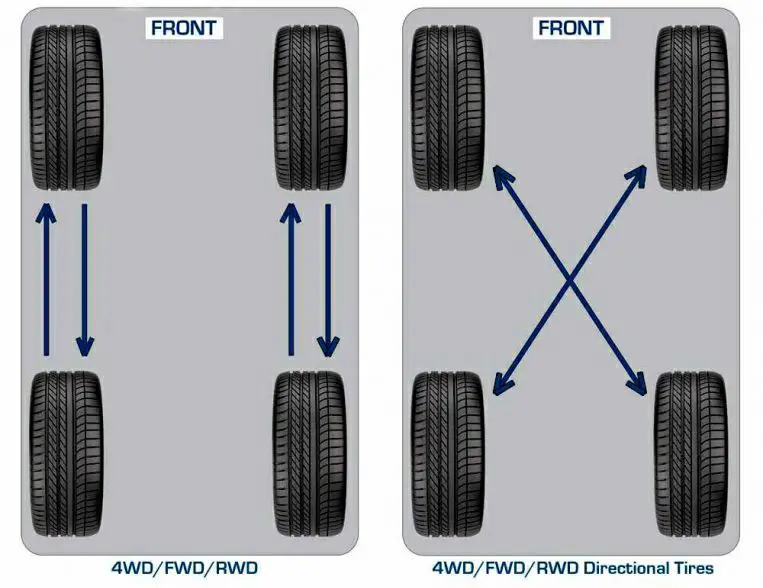Directional tires have a tread pattern designed to rotate in only one direction. When you look at such tires head on, the lateral voids and channels on the tread all point forward and down. The channels on both sides of the tread will run like two waterfalls joining from opposite sides, like this: ϒ
Directional tires (also called unidirectional) are better for performance cars — and traveling at high speeds — than tires with symmetrical or asymmetrical tread patterns. The tires channel water away efficiently for excellent hydroplaning resistance and deliver sporty performance on dry surfaces.
But directional tires cannot be easily rotated to as many positions on the vehicle. In order to rotate directionals to opposite sides of a vehicle — not just between front and back on the same side — the tires have to be dismounted from the wheels and remounted before being installed.
For this reason, most drivers end up just switching directional tires from front to back on the same side when they get a rotation. This means the tires will wear less evenly and more quickly, and that’s why you may get less mileage.
Most directional tires have a solid center rib, which adds rigidity for high-speed stability. Also, the lateral channels on the tread pattern all point down in a V-shape. Such designs are used on summer or winter tires.
Here’s a comparison between directional, symmetrical and asymmetrical treads.
The most common tread pattern for passenger cars is symmetric. The left and right tread blocks mirror each other, and the grooves and voids point in multiple directions. Both summer and winter tires use this type of pattern.
Asymmetric treads combine the above two patterns to offer good grip on dry, wet or snowy roads, making the tread type a better choice for all-season use. The inner side of asymmetric tires often features lateral voids like those found in directionals, while the outer side uses larger tread blocks.
On directional tires, there’s an arrow on the sidewall of the tires — when correctly mounted, the arrow points toward the front of the vehicle. If directional tires get mounted backward, you won’t get the hydroplaning resistance and other performance driving benefits the tread is designed for.
Front and rear tires often wear at different rates. It is recommended to rotate standard tires between front and back and crossways to maximize lifetime mileage.
When you have directional tires, you can only easily swap fronts for rears on the same side of the car. If you want to cross tires to opposite sides, you’ll have to go through the time and expense of having the tires taken off the wheels, flipped, remounted on the wheels and swapped.
Directional tires provide superior handling in wet conditions or dry. The V-shaped tread allows water to be pushed outward as the tire rotates, evacuating water better than a symmetric tire.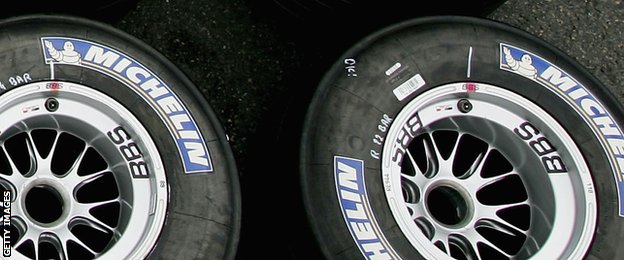
The tires handle better at high speeds. Most race and sports cars run with directional tires.
Directionals can also provide better fuel efficiency since they have less rolling resistance. (But if you’re a spirited driver, faster accelerations and speeds may offset these gains.)
The main downside is cost. The rubber compounds used in these high-performance tires mean a premium price point compared to standard passenger car tires.
Also, directionals typically have shorter tread life. It’s not because the tread is less durable, but rather it’s because tire rotations involve extra labor and cost. Many drivers opt to swap front and rear tires on the same side to avoid the hassle.
SHOP TIRES
There are benefits to directional tires and it is good to know if your tires are directional so that you don’t improperly rotate them. But how can you tell?
Not only is it important to know what directional tires are and how to tell if you have them, but it is also good to know why it is important to know if you have directional tires and how to know which way they should be facing.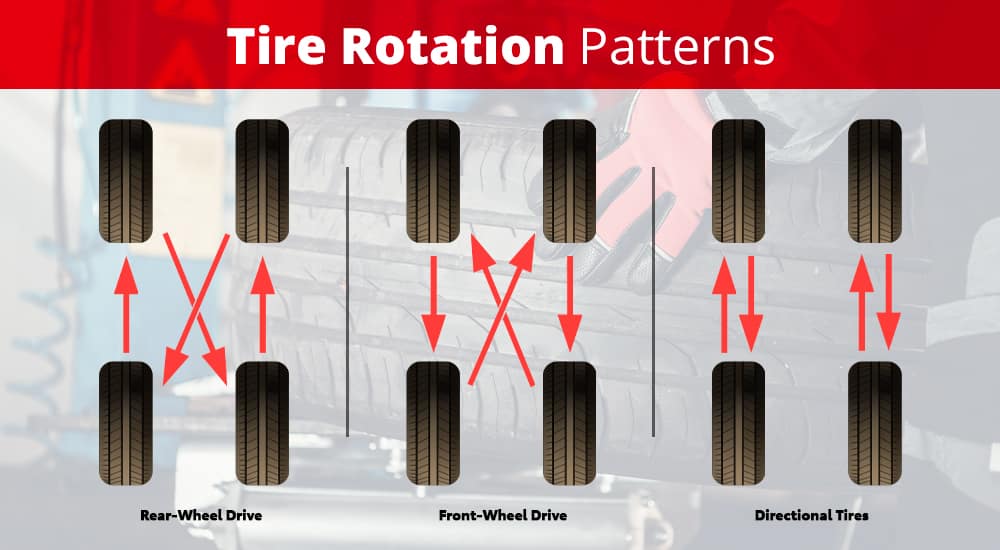
You can check the sidewall because a directional tire will have an arrow pointing towards the front end of the vehicle or say “this side out” to indicate which side of the car it is meant for. You can also check for the v pattern on the tread.
This article was written from personal experience combined with expert advice.
Directional tires have a different tread pattern than symmetrical or asymmetrical tires. The pattern on the tread of directional tires is only designed to go one direction. This creates a v or y shape when you look at the tread pattern.
Directional tires are also called unidirectional tires and are better for performance cars and high speed. Directional tires move the water away which makes them better for preventing hydroplaning.
Since directional tires have to face a certain direction, they cannot be rotated to the other side of the vehicle without more work. To rotate them to the opposite side of the vehicle, they have to be dismounted and remounted on the wheels in the correct position.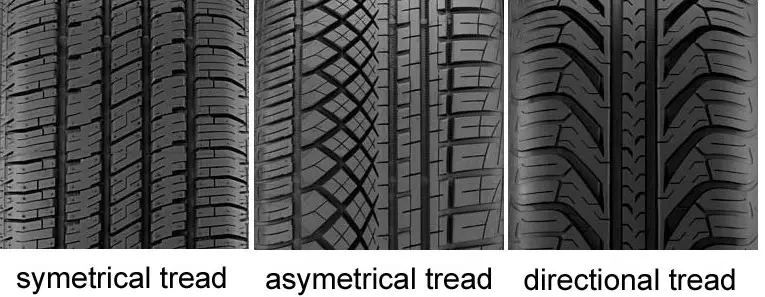 This is why most drivers that have directional tires tend to rotate them from front to back or vice versa instead of doing a full rotation. However, this can lead to uneven tread wear and poor gas mileage.
This is why most drivers that have directional tires tend to rotate them from front to back or vice versa instead of doing a full rotation. However, this can lead to uneven tread wear and poor gas mileage.
Even though directional tires are more expensive than the average symmetrical and asymmetrical tires, there are some great benefits to be aware of.
The v-shaped tread on directional tires gives them improved handling ability in wet conditions. This is because the water will be channeled and pushed away from the tires. They also work well on dry surfaces. This is true even when traveling at higher speeds. Most race cars and sports cars use directional tires because of their handling ability at higher speeds. This is because of the better traction that directional tires create.
Also, directional tires can provide you with improved fuel efficiency. This is because they have less resistance to rolling.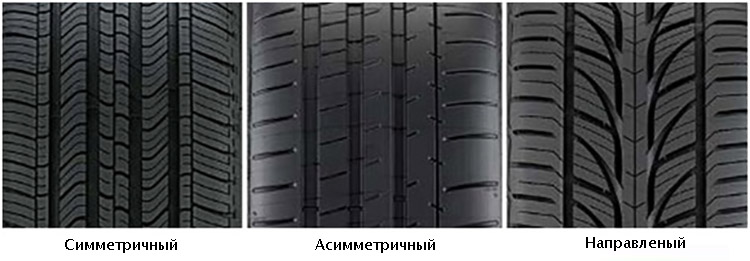 There may also be an improvement in fuel efficiency when driving on wet surfaces because of the tendency to channel the water away. They will also protect you against hydroplaning.
There may also be an improvement in fuel efficiency when driving on wet surfaces because of the tendency to channel the water away. They will also protect you against hydroplaning.
Directional tires also tend to be good in different conditions. They can adequately handle snow and mud for example. They are often much quieter than other tire types as well. Finally, many people like the way directional tires look because they have a fast, sleek appearance.
Besides the increased price compared with other tires, there is only one major downside to directional tires. The tread on unidirectional tires will typically be shorter than with other types of tires. This is because users tend to only rotate them front to back. However, if you do not mind the extra labor and cost of rotating them to the other side of the vehicle, then they can last just as long as any other tire.
The easiest way to tell if you have directional tires is to read the sidewall. The sidewall of a tire contains a lot of information including the direction on a directional tire. There are two different things that may indicate that the tire is directional. The first is an arrow pointing in the direction of the forward motion or the front end of the vehicle. The second indicator on the sidewall will be the words “This Side Out” that indicate that to rotate to the opposite side the tire would have to be dismounted and remounted facing the correct direction.
The sidewall of a tire contains a lot of information including the direction on a directional tire. There are two different things that may indicate that the tire is directional. The first is an arrow pointing in the direction of the forward motion or the front end of the vehicle. The second indicator on the sidewall will be the words “This Side Out” that indicate that to rotate to the opposite side the tire would have to be dismounted and remounted facing the correct direction.
Asymmetrical tires will also require correct mounting onto wheels because they have an inside face and an outside face. However, unlike directional tires, the outside and inside are the only things that matter and they can point any direction.
Another way to tell if you have directional tires is by looking at the tread pattern on the tires. A directional tire will have a unique looking tread compared with other types of tires. The tread pattern will form a v-shape or a y-shape when you face the tire from the front.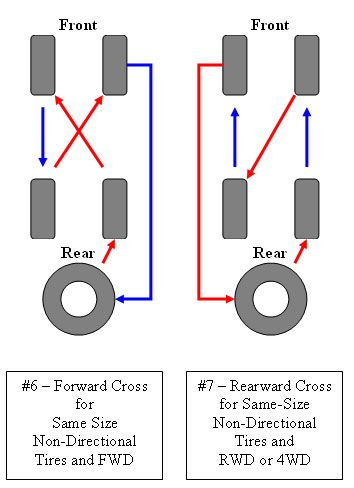 This is different from symmetrical tires because a symmetrical tire will have a tread pattern that partially goes towards both directions so that it does not matter which way the tire is mounted on the vehicle.
This is different from symmetrical tires because a symmetrical tire will have a tread pattern that partially goes towards both directions so that it does not matter which way the tire is mounted on the vehicle.
It is also important to check to see if all of the tires on your vehicle are directional. You should never assume that just because one or both front tires is directional or nondirectional that the other ones will be the same way. It is entirely possible to have a mixture of directional and nondirectional tires on the same vehicle.
There are a couple of reasons why it is important to know if your tires are directional whether they are tires already on your vehicle or tires that you plan on mounting to your wheels. Even though a unidirectional tire that does not face the right way is not necessarily a safety hazard, it does negatively impact the tire and vehicle performance and may reduce energy efficiency and it should be corrected. Finally, if they are not installed correctly, the tread can wear down much faster. Tread that is worn down too much does, in fact, pose a safety hazard.
Finally, if they are not installed correctly, the tread can wear down much faster. Tread that is worn down too much does, in fact, pose a safety hazard.
The first reason why it is important to know if the tires are directional is when you are preparing to mount them to a vehicle. When you are mounting directional tires, you have to make sure they are facing the correct direction. Therefore, not only do you have to know if they are directional tires, you also have to know which way they need to be installed.
You can double check for an arrow on the sidewall that points to the front of the vehicle. Alternatively, you can look at which way the tires face by looking for the v shape in the tread. This shape should be visible when looking towards the front surface of the tire.
Another reason why it is good to know if your tires are directional is for rotating. Since they are made to face a single direction, they cannot be rotated in the same way as other tires. When nondirectional tires are rotated, they are typically moved from the front to the back and vice versa and, depending on if it is rear wheel drive or front wheel drive, they will also move to the opposite side of the vehicle. With directional tires, the process is not as simple.
With directional tires, the process is not as simple.
When you are preparing to rotate the tires on a vehicle that has directional tires, you will have to follow a different procedure. Typically, you can still rotate the front and rear tires as long as they stay on the same side. This is beneficial, but doing this throughout the tires’ lives can wear out the tread fast and unevenly which means new tires sooner. The best way to properly rotate directional tires requires more skill, labor, and cost than a typical tire rotation.
The best way to properly and adequately rotate directional tires is to remove the tires completely and remount them in the correct direction at the proper rotation place. This would depend on whether the vehicle is rear wheel drive, all wheel drive, or front wheel drive.
Introduction
What is the feature of the directional tread pattern?
Advantages and disadvantages of
directional tiresHow to properly install directional tires
Conclusion
When choosing good tires, you often face the problem of not only a huge number of models, but also a variety of tread patterns, which also need to be sorted out.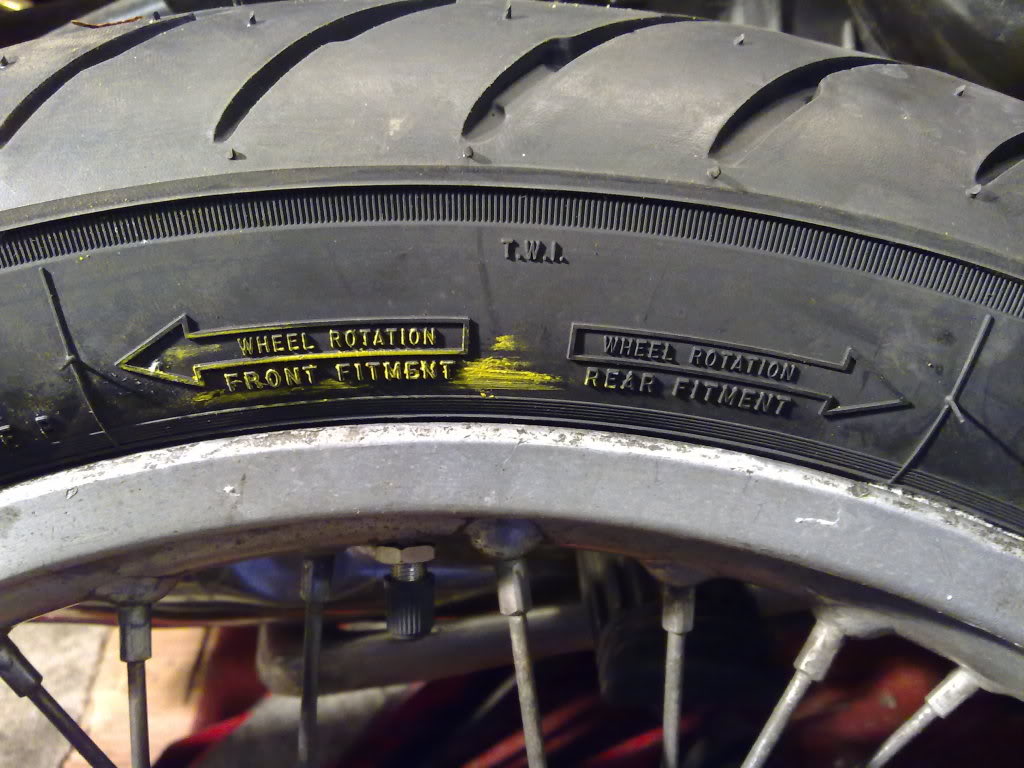 One of the most popular patterns is the traditional directional pattern, which has been used on the tread surface of a wide variety of tires for decades.
One of the most popular patterns is the traditional directional pattern, which has been used on the tread surface of a wide variety of tires for decades.
What are directional tires and why are they still in demand not only among motorists, but also among professional motorcycle racers? In the article, we will reveal all the secrets and technologies of directional tires, as well as show you how to install them correctly. Here, nuances and discoveries await us at every step.
There are four types of car tire tread pattern:
directional symmetrical,
non-directional symmetrical,
non-directional asymmetrical,
directional asymmetric.
Each drawing is designed for its own version of the road and has its own set of advantages. Different tread patterns have different functionality and behavior on the road. When mounting tires on wheels, their own installation principles also work, which will need to be strictly observed so as not to create an emergency.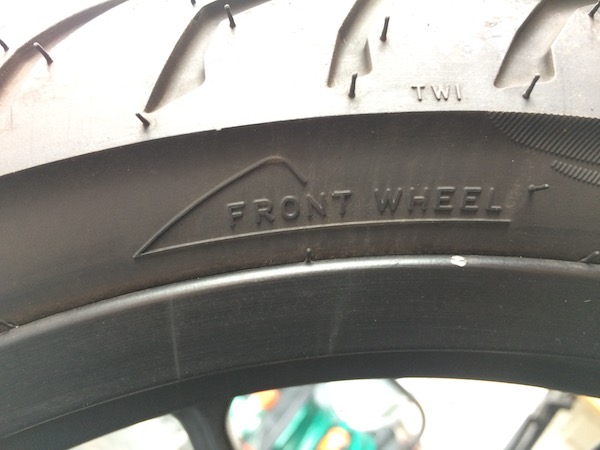 We will talk about them in the corresponding section.
We will talk about them in the corresponding section.
The essence of the directional tread design is clear at a glance: the blocks, ribs and tread grooves of the V-pattern are directional, spinning the wheel in a certain direction. Most often, directional tires are found in winter models, but there are many of them among summer ones. In symmetrical tires, both halves of the directional tread are mirrored, in an asymmetric design, both halves have a different structure and different functionality.
It is necessary to mount the wheels only in the right direction, otherwise all the advantages will come to naught, and at the same time problems with handling and accelerated wear will be added. Excessive strong pressure will accumulate in the center of the working area, due to which the tire will begin to rise above the road and harm traction in how many areas.
The directional tread pattern is best suited for wet tarmac, as the grooves that widen from the center to the sides are much better at shedding water from the contact surface.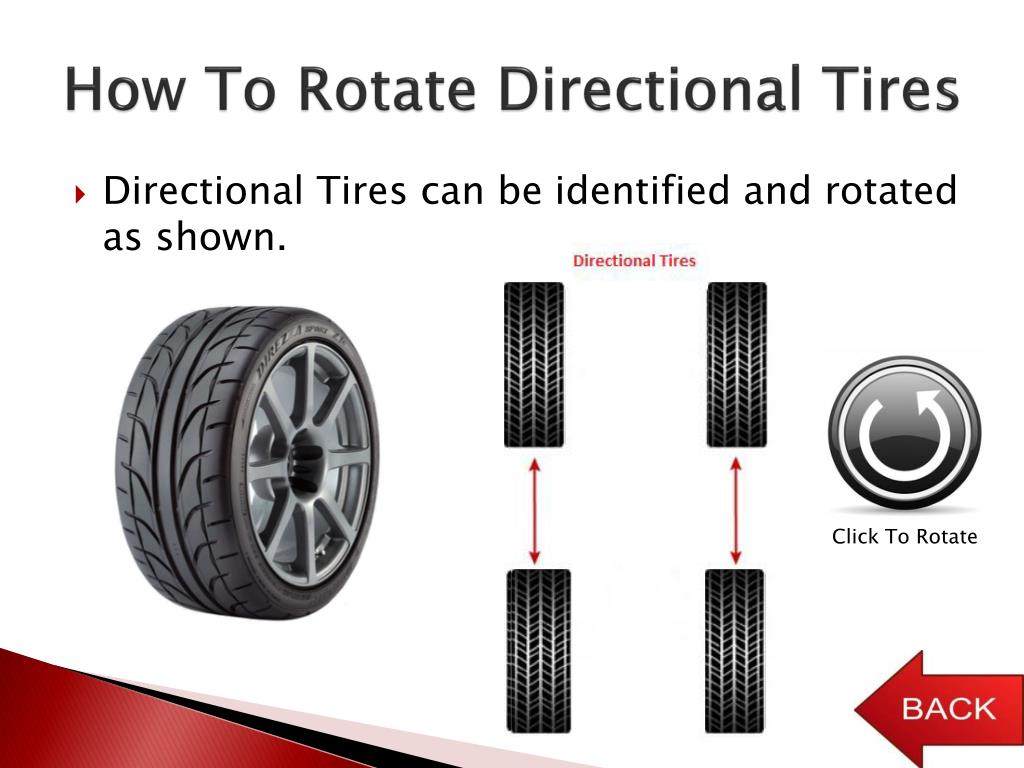 This not only improves grip on wet surfaces, but also works in favor of protection against the effect of hydroplaning. This works even better for a rear-wheel drive car - the front wheels will quickly clear the water before the rear axle sets foot on the road. Accordingly, contact with the track in such a car will be much more thorough.
This not only improves grip on wet surfaces, but also works in favor of protection against the effect of hydroplaning. This works even better for a rear-wheel drive car - the front wheels will quickly clear the water before the rear axle sets foot on the road. Accordingly, contact with the track in such a car will be much more thorough.
The directional pattern of the winter models excels in raking snow and removing dirt from the contact surface - ideal for snowy trails in the winter.
On a dry summer surface, they also give the car a couple of advantages - first of all, it concerns directional and lateral stability. For high-speed tires, this is one of the most relevant designs, as directional tires have a positive effect on the reactions of the car at high speed.
However, their driving disadvantage is the increased noise level during active work on asphalt, and the higher the speed, the stronger the rumble. Also, directional tires are more expensive than non-directional tires, but cheaper than asymmetric ones. It is better not to install directional tires if you often drive on dirt roads or are completely forced to drive off-road. They will not show effective work on soft and medium hard surfaces. For rural areas, a tread pattern with a non-directional arrangement of large lugs is better suited. Remember that, being put on disks, wheels with directional rubber can only be changed from the front axle to the rear and vice versa, but not rearranged on the sides. To do this, the tires will have to be disassembled and put as needed.
It is better not to install directional tires if you often drive on dirt roads or are completely forced to drive off-road. They will not show effective work on soft and medium hard surfaces. For rural areas, a tread pattern with a non-directional arrangement of large lugs is better suited. Remember that, being put on disks, wheels with directional rubber can only be changed from the front axle to the rear and vice versa, but not rearranged on the sides. To do this, the tires will have to be disassembled and put as needed.
Although we've talked about directional tires, it's the symmetrical design that's most common. Asymmetric directional pattern is very rare. This is due to the fact that such tires are not only much more difficult and expensive to manufacture, but they have one serious drawback for car owners. Due to the very strict installation scheme for the car, constant difficulties arose with spares - I had to constantly carry two spare wheels with me instead of one, because you never know which tire will be damaged, and you can’t change directional asymmetric tires with sides.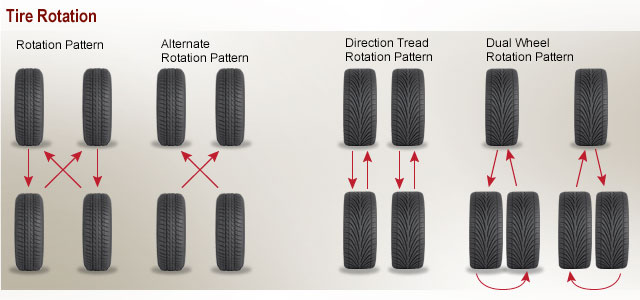 In addition, the warehouses constantly accumulated tires for only one side, which are completely useless without a paired wheel.
In addition, the warehouses constantly accumulated tires for only one side, which are completely useless without a paired wheel.
As mentioned above, one of the "secrets" of directional tires is their installation pattern. Simply put, you need to find the inscription Rotation (from the English. "Rotation") with an arrow on the sidewall. It is this marker that is an indicator - in which direction the tire pattern should “look” when installed on a car. If you make a mistake with the direction of rotation and put the rubber against the arrow, then the drainage system will rake in water like a mill, and not discard it, leveling all the advantages of the model, or even exacerbating them. The fact that the tires are installed incorrectly will tell you a sharply increased noise in the cabin.
If for some reason you could not find this marker, then you can do it even easier - pay attention to the tire tread pattern itself. The rubber of the directional design is a kind of "herringbone" that is directed forward. Simply mount the tires so that the tread pattern faces the direction of travel of the vehicle.
Simply mount the tires so that the tread pattern faces the direction of travel of the vehicle.
Rubber with an asymmetric device should only be mounted according to the marking, since each individual side is designed for its own tasks and should never be confused. The correct direction of asymmetric tires will help determine the labels:
Outside, or the outer side of the tire, must face outward.
Inside, or the inner side, respectively, looks inside the car.
Right and left asymmetric tires are much less common. Left (or simply L) will be written on one tire - it means that it must be placed to the left of the body, Right (R) - to the right. You can change them only on one side of the body - front with rear and vice versa.
But much more often, directional tires can be mounted on a rim on either side, the main thing is to follow the direction of the pattern.
And don't forget to balance freshly assembled wheels - tires will never show their advantages and characteristics without good balance.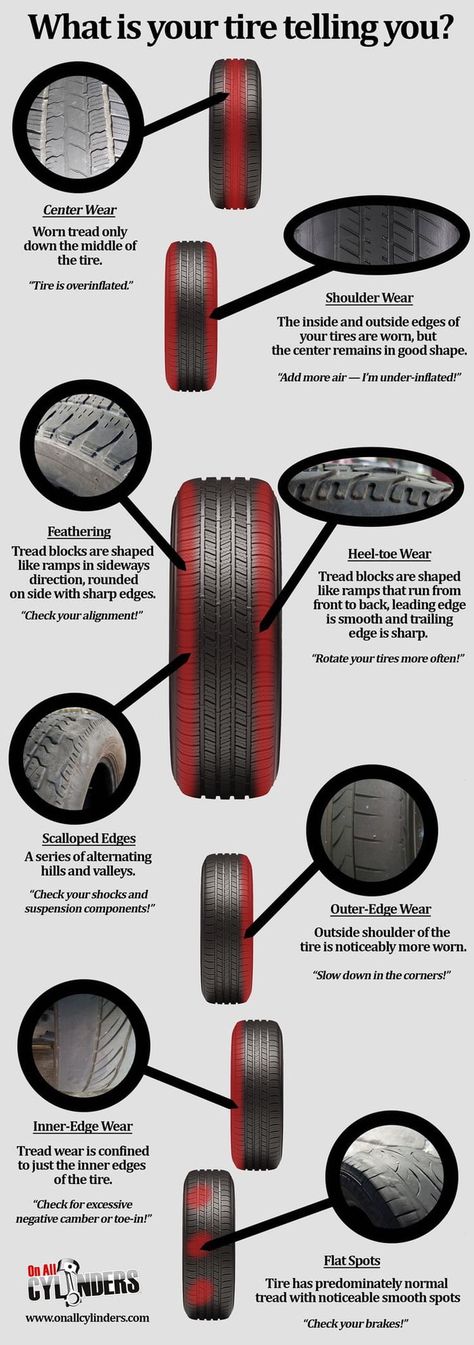 Only after that you can proceed to the installation on the hubs. After installation, go around the car in a circle and check the markings. Recall that we need the rotation direction under the Rotation arrow. If you have an asymmetric directional tire, then make sure that only the Outside is visible. Left (Left) and right (Right) asymmetric tires must show the sides of the body in the direction of travel.
Only after that you can proceed to the installation on the hubs. After installation, go around the car in a circle and check the markings. Recall that we need the rotation direction under the Rotation arrow. If you have an asymmetric directional tire, then make sure that only the Outside is visible. Left (Left) and right (Right) asymmetric tires must show the sides of the body in the direction of travel.
You can learn a couple more tips about directional tires from this video:
To make it clearer what consequences a car driver can face with wheels installed, figuratively speaking, "back to front" , let's figure out what directional tires are.
In this rubber, the drainage grooves are located in the direction of rotation of the wheel, converging towards the center in the direction of rotation.
Directional tires can be symmetrical or asymmetrical. In the first case, the tread halves mirror each other, enhancing traction and drainage capabilities.![]() In the second case, the pattern type is different on both sides. Tires with directional tread are also available in winter, all-weather and summer tires, studded and studless.
In the second case, the pattern type is different on both sides. Tires with directional tread are also available in winter, all-weather and summer tires, studded and studless.
In this case, most often directional tires are found in winter and so-called "rain" models. You can distinguish tires with a directional tread by marking "Rotation", an arrow or triangular notches indicating the direction of the car.
Why and who should choose "directional" tires
The choice of tires with directional tread is justified, first of all, when you rarely leave the pavement, that is, you move mainly in the city.
For rear-wheel drive vehicles, directional tires are also a smart choice and a way to improve traction, as the "driven" front wheels dry up the stretch of road before the rear wheels can get to it. In addition, on winter snow-covered roads, the directional tread pattern helps to row snow and effectively remove it from the contact patch.
On packed snow, "directional" tires are again a priority.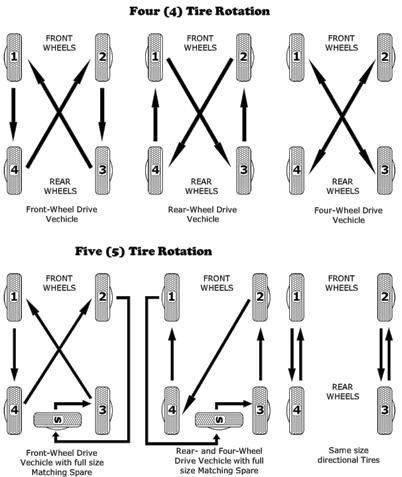 In summer, in addition to improved grip on wet surfaces, when choosing directional tires, we also get optimal driving stabilization. Such tires almost do not sag even at high speeds, and therefore are great for long-distance trips at a brisk pace.
In summer, in addition to improved grip on wet surfaces, when choosing directional tires, we also get optimal driving stabilization. Such tires almost do not sag even at high speeds, and therefore are great for long-distance trips at a brisk pace.
What happens if you install the directional tires incorrectly
Now imagine that an inexperienced tire fitter or you yourself installed "directional" tires "against the wool, mounting them on the wheels with the opposite sidewall.
First of all, such an error will affect the braking distance, however, not as significant as many believe.On average, when braking from 100 km / h on a wet or slippery surface, the car will travel about 1 - 1.5 meters more than a car with the right shoes - the corresponding measurements were repeatedly carried out by experts from leading automotive editions
Hydroplaning problems are much more serious. When the wheels, mounted on the wrong side, fall into a puddle, water or snow porridge will not be evacuated from the contact patch, and a so-called hydrodynamic wedge will appear in this area.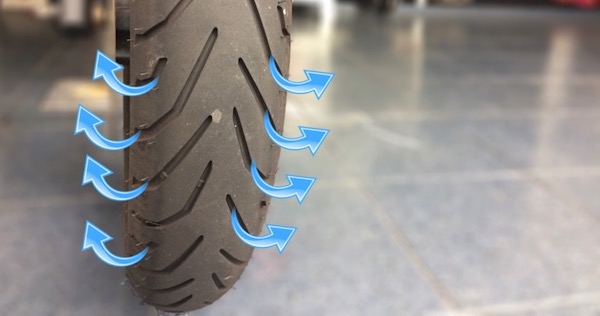 As a result, the car can lose traction and literally "float", losing contact with the road already at 70 km / h. Accordingly, when driving on the highway, when the cruising speed is an average of 110 km / h, driving on rubber installed against the wool becomes literally dangerous.
As a result, the car can lose traction and literally "float", losing contact with the road already at 70 km / h. Accordingly, when driving on the highway, when the cruising speed is an average of 110 km / h, driving on rubber installed against the wool becomes literally dangerous.
It is also not surprising that the wrong orientation of the rubber complicates the control during extreme maneuvers, and also reduces the speed of their execution. The steering angles increase and difficulties arise with the stabilization of the machine.
It is also clear that such tire fitting errors will lead to faster tire wear and higher driving noise. And, finally, problems can arise when driving on snow-covered primers. The tread of an incorrectly installed directional tire will collect snow in front of it and cause slippage.
If only one wheel is incorrectly installed
It is especially dangerous when only one wheel is installed "against the course". In this case, the car will go off course due to different rolling resistance or due to different thrust vectors of the wheels of the left and right sides.